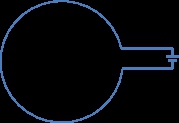In the study of electromagnetism, understanding the relationship between changing magnetic flux and induced electromotive force (EMF) is crucial. According to Faraday's law, a change in magnetic flux through a surface generates an EMF, which can be related to the induced current using Ohm's law. However, determining the direction of this induced current requires the application of Lenz's law. This law states that the direction of the induced current will create a magnetic field that opposes the change in magnetic flux. The key concept here is that the induced current acts to counteract the change occurring in the system.
To visualize the direction of the induced current, the right-hand rule is employed. When applying this rule, the thumb points in the direction of the magnetic field, while the fingers curl in the direction of the induced current. This method is essential for analyzing various scenarios involving magnetic fields and induced currents.
Mathematically, Faraday's law can be expressed as:
\[\epsilon = -n \frac{\Delta \Phi}{\Delta t}\]
where \(\epsilon\) is the induced EMF, \(n\) is the number of loops, and \(\Delta \Phi\) represents the change in magnetic flux over time \(\Delta t\). The negative sign in this equation reflects Lenz's law, indicating that the induced EMF acts in the opposite direction to the change in magnetic flux.
For example, consider a bar magnet moving downward through a loop. As the magnet approaches, the magnetic field through the loop increases, leading to a positive change in magnetic flux. According to Lenz's law, the induced current will flow in a direction that creates a magnetic field opposing this increase, resulting in an upward-directed induced magnetic field. Using the right-hand rule, this configuration yields a counterclockwise current when viewed from above.
In another scenario, if a loop is moving out of a magnetic field, the area through which the magnetic field lines pass decreases, resulting in a negative change in magnetic flux. Here, the induced magnetic field will act to counteract this decrease, reinforcing the existing downward magnetic field. Again, applying the right-hand rule reveals that the induced current will flow in a clockwise direction when viewed from above.
These principles can be summarized as follows: when the magnetic field is increasing, the induced magnetic field will oppose that increase, and when the magnetic field is decreasing, the induced magnetic field will act to restore the original state. This consistent behavior of induced currents is fundamental in understanding electromagnetic induction and its applications in various technologies.



